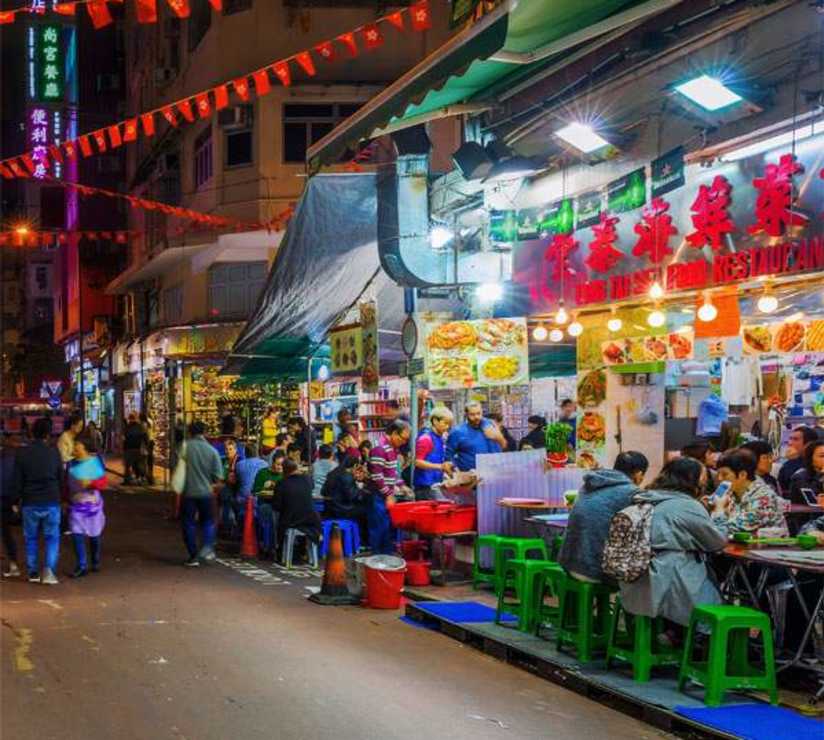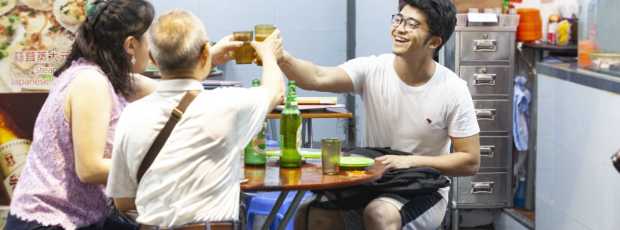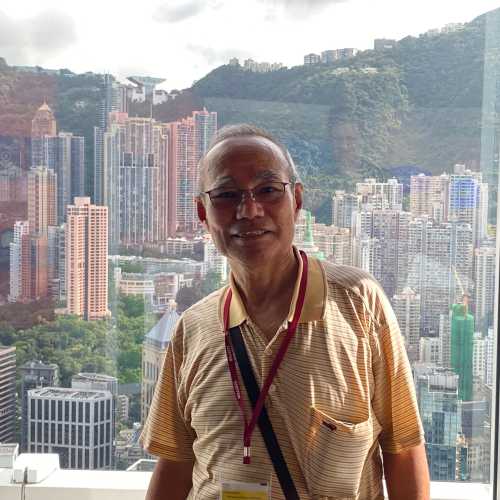Table Of Contents
- Why Hong Kong's nightlife beats anywhere else
- Temple Street Night Market: still the heart of it all
- Where locals actually eat after dark
- Sham Shui Po: the neighborhood tourists skip
- Neon magic in the urban jungle
- Victoria Harbour after the crowds leave
- Victoria Peak: timing matters more than you think
- Ferry rides that reset your perspective
- Mid-Levels and Man Mo Temple after midnight
- Hidden bars where locals actually drink
- Late-night adventures beyond the city center
- Chinese New Year nights: pure joy
- Beyond the famous night markets
- Finding your Hong Kong rhythm
Why Hong Kong's nightlife beats anywhere else
I've lived in Hong Kong my entire life, and here's what tourists don't realize: this city transforms completely after dark. Unlike Paris, Singapore, Milan or other major cities where nightlife feels separate from daily life, Hong Kong's nightlife is woven into how we actually live. It's not performance, it's participation.
The perfect time to understand Hong Kong is between 7pm and midnight, when the urban jungle reveals its true personality. Office workers mix with street vendors, Michelin-starred restaurants operate next to dai pai dong stalls, and the city's vertical density creates this incredible energy you can't find anywhere else.
Most guidebooks make the mistake of treating Hong Kong nights like a checklist. Trust me, the best fun things to do in Hong Kong happen when you follow your nose, not your itinerary.
Temple Street Night Market: still the heart of it all
Temple Street Night Market remains one of the top things to experience, and I'm a big fan of how authentic it stays despite the tourist attention. This isn't some sanitized cultural experience, it's Hong Kong doing what it's always done, just with more neon signs.
The night market spreads through Yau Ma Tei like it owns the place. You'll smell curry fish balls before you see the stalls, hear Cantonese opera singers before you spot their stages. The fortune tellers set up around 8pm, and even if you don't believe in palm reading, it's worth checking out their rapid-fire predictions.
Other tips for Temple Street: the best food stalls have long lines of locals, not English menus. Come hungry and stay late; this market gets better as the night deepens.
Where locals actually eat after dark
The secret to Hong Kong food culture isn't fancy restaurants listed in the Michelin Guide (though we have those). It's the dai pai dong, open air food stalls that serve incredible food from what looks like someone's outdoor kitchen.
Street food here isn't just eating, it's participating in Hong Kong's communal night ritual. You're sharing space with taxi drivers, students, office workers. Everyone's equal when you're slurping noodles under fluorescent lights.
Looking for a private city experience in Hong Kong?
Explore the city with a local who plans a private day just for you; no groups, no scripts.
Sham Shui Po: the neighborhood tourists skip
Most visitors stick to Central and Tsim Sha Tsui, missing Sham Shui Po entirely. Their mistake, because this neighborhood comes alive at night in completely authentic ways.
Sham Shui Po has electronics markets open until 10pm, selling everything from vintage cameras to phone parts. But the real discoveries are tiny restaurants tucked into spaces so small you might walk past.
The beauty is that it's still a functioning neighborhood, not a tourist attraction. You're not observing Hong Kong life, you're part of it.
Neon magic in the urban jungle
Hong Kong's famous neon signs make sense at night in their natural habitat. Yau Ma Tei has some of the city's most photogenic lights, but more importantly, neon that's still working, still serving its purpose in this dense urban jungle.
These aren't museum pieces, they're advertising restaurants serving the same dishes for forty years, pharmacies where the same family fills prescriptions for three generations. The lights tell stories about Hong Kong's layered history and present simultaneously.
Walking through Kowloon at night, you realize neon isn't decoration, it's infrastructure. It's how this vertical city communicates with itself.
Victoria Harbour after the crowds leave
Everyone knows the Symphony of Lights at 8pm, but the real magic happens after the tourists disperse. Victoria Harbour becomes contemplative around 9pm; calmer, more honest about what this city really is.
From Kowloon side, you see Victoria Peak's lights cascading down like spilled diamonds. From Hong Kong Island, you get Kowloon's layered density, how residential towers stack behind commercial strips, old and new architecture negotiating space.
Late at night, around 11pm, the harbor takes on a different personality. Corporate lights dim, residential ones stay on. You're looking at eight million people living their lives, which is more impressive than any light show.
What if your day in Hong Kong was planned by someone who knows it — and you?
City Unscripted matches you with a local host who creates a private experience based on your interests, not a set route.
Victoria Peak: timing matters more than you think
Victoria Peak is touristy, but the view genuinely is spectacular. Here's what guidebooks don't tell you: when you go matters more than that you go. Course, everyone hits sunset, that's the mistake.
Come around 9pm instead, when city lights are fully on but tourist buses have departed. The Peak Tower is fine, but for the best views, walk to the actual summit. You're looking down at one of the world's great cities, but from here, it looks almost manageable.
The tram ride down at night is part of the experience, descending through layers of the city, watching Hong Kong reassemble itself as you return to street level.
Ferry rides that reset your perspective
The Star Ferry between Central and Tsim Sha Tsui offers one of the world's great urban experiences. At night, it becomes almost meditative, a quick stop from Hong Kong's street-level intensity.
But the real ferry experience is Cheung Chau at dusk; forty minutes of gradually leaving the city behind. By the time you reach the island, you feel like you've traveled much further than you actually have.
The return ferry around 10pm gives you Hong Kong's most dramatic approach. The city grows larger and brighter as you get closer, like returning to the future from the past.
Mid-Levels and Man Mo Temple after midnight
Most visitors never make it to Mid-Levels, missing this completely different perspective on Hong Kong life. The Mid-Levels escalator; which holds Guinness World Records as the world's longest outdoor covered escalator system, becomes a slow-motion tour through different layers of society at night.
Man Mo Temple, tucked into these streets, transforms at night. The incense smoke is thicker, lighting more dramatic, atmosphere more intimate. Without daytime tour groups, you can actually experience its spiritual weight.
Walking through Mid-Levels residential streets after 11pm reveals Hong Kong's domestic side. Apartment windows glow with family dinners, homework sessions, late-night TV. All those towers you see from the harbor are full of people living surprisingly normal lives, just vertically compressed.
Tip
We match you with the right host, not just any guide.Want to experience the real Hong Kong with someone who lives there?
A fully private experience, planned and led by a local host who tailors the day to you
Hidden bars where locals actually drink
Hong Kong's bar scene has exploded, but most famous spots are expensive and tourist-heavy. The bars I actually frequent are smaller, cheaper, hidden in places you'd never think to look, often near major hotels but completely different experiences.
The best hidden bars in Hong Kong are the ones you discover by accident, unmarked doors in Central, basement entrances in Wan Chai, upstairs spaces that feel more like someone's apartment rather than a commercial venue. These places exist throughout the city, changing locations and evolving with the neighborhoods.
What makes these places special isn't exclusivity, it's community. Locals talk to each other, bartenders actually engage with customers, and the atmosphere encourages real conversations rather than social media moments.
Late-night adventures beyond the city center
Some of Hong Kong's best late-night eating requires travel. Sai Kung transforms at night into a seafood paradise where restaurants stay open until the last customer leaves.
Pick your fish from tanks outside, negotiate price, wait while they prepare it. The restaurants here specialize in Cantonese-style seafood; steamed fish with ginger, typhoon shelter crab with garlic and chili, mantis shrimp that was swimming an hour ago.
Lantau Island offers different late-night adventures. While Tian Tan Buddha closes after dark, Ngong Ping area has great restaurants for evening visitors. It's completely different energy from urban Hong Kong; quieter, more spiritual, surrounded by mountains instead of skyscrapers. A trip well worth it.
Chinese New Year nights: pure joy
If you're in Hong Kong during Chinese New Year, the nighttime celebrations are unmissable. This isn't just fireworks; it's the entire city expressing its cultural identity simultaneously.
Streets fill with families in new clothes, carrying oranges for luck, visiting temples. Temple Street becomes even more chaotic with additional food stalls, traditional performances, crowds spilling into neighboring streets. Victoria Harbour hosts special firework displays, but real magic happens in neighborhoods organizing their own celebrations.
Ready to plan your perfect day in Hong Kong?
Start your experienceBeyond the famous night markets
While Temple Street gets attention, Hong Kong has dozens of night markets serving local communities. Ladies Market in Mong Kok stays busy late, but real discoveries happen in smaller markets most visitors never hear about.
There's this market in Causeway Bay (open till 8pm) which primarily for locals doing evening grocery shopping, but with incredible street food stalls between vegetable vendors. Same quality as Temple Street but without the performance; these vendors cook for neighbors, not tourists.
The food often outshines famous spots because vendors cook for repeat customers. They need to be consistently excellent, night after night, year after year.
Finding your Hong Kong rhythm
After years here, the best nights happen when you stop trying to see everything and follow your instincts. The city rewards curiosity, spontaneity, and appetite; both for food and experiences you can't plan.
Maybe your perfect Hong Kong night is bar-hopping in Central until 2am. Maybe it's eating through Temple Street Market. Maybe it's the ferry to Cheung Chau just to see what happens. Maybe all three, because in Hong Kong, transitions happen fast.
Every neighborhood has its own nighttime personality. Central becomes a playground for finance workers. Kowloon stays grounded in local life. Mid-Levels transforms into a vertical village. Islands offer escape and slower rhythms.
The best advice for experiencing fun things to do in Hong Kong at night: come hungry, stay curious, don't be afraid to get lost. This city's nighttime magic isn't behind velvet ropes; it's happening on every street corner, in every market stall, on every ferry ride.
Looking for authentic Hong Kong experiences without crowds? Start with neighborhoods locals frequent, eat where queues are longest, remember that the best nights often begin when you think they should end. Whether seeking authentic street food, stunning harbor views, traditional culture, or just electric energy of eight million people living intensely, Hong Kong at night delivers experiences you can't find anywhere else.
What if your day in Hong Kong was planned by someone who knows it — and you?
City Unscripted matches you with a local host who creates a private experience based on your interests, not a set route.
Want to experience the real Hong Kong with someone who lives there?
A fully private experience, planned and led by a local host who tailors the day to you










